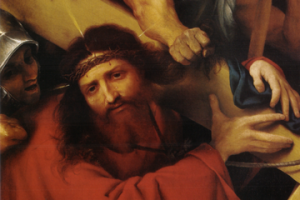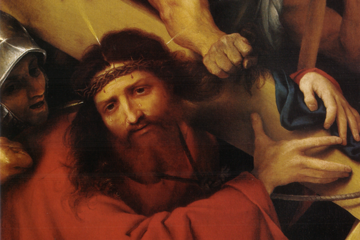 The video at the bottom of this post is a heartwarming one, and with a surprise ending. I see in it an illustration of something St. Paul wrote about the sacrificial nature of evangelization:
The video at the bottom of this post is a heartwarming one, and with a surprise ending. I see in it an illustration of something St. Paul wrote about the sacrificial nature of evangelization:
Though I am free and belong to no one, I have made myself a slave to everyone, to win as many as possible. To the Jews I became like a Jew, to win the Jews. To those under the law I became like one under the law (though I myself am not under the law), so as to win those under the law. To those not having the law I became like one not having the law (though I am not free from God’s law but am under Christ’s law), so as to win those not having the law. To the weak I became weak, to win the weak. I have become all things to all people so that by all possible means I might save some. I do all this for the sake of the gospel, that I may share in its blessings (1 Cor 9:19-23).
To be clear, what St. Paul describes here must be understood as solidarity and brotherhood, not compromise with sin or evil. St. Paul is willing to set aside anything that hinders preaching the truth of the gospel. Every pretense, every honor, every distinction, and every preference that interferes with the gospel message is forsaken when necessary. St. Paul describes here a great willingness for kenosis (emptying of oneself).
And of course St. Paul is imitating Jesus, who,
though he was in the form of God, did not count equality with God a thing to be grasped, but emptied himself, taking the form of a slave, being born in the likeness of men. And being found in human form, he humbled himself by becoming obedient to the point of death, even death on a cross (Philippians 2:6-8).
It is remarkable that Jesus, though sinless, was not ashamed to be identified with sinners. He took baptism in the Jordan. He associated with sinners and even ate with them. He underwent the most humiliating punishment, one typically meted out only to the worst of sinners. Yes, He was crucified—and between two thieves at that! Everyone walking by that Friday probably remarked, “Look at that sinner!” Jesus was willing to be viewed as a sinner (by us sinners) in order to save us sinners. And, finally, He was assigned a grave with the wicked (Is 53:9).
There is an old saying that Jesus didn’t come just to get us out of trouble; He got into trouble with us. Yes, He endured every blow this world and Hell itself could dole out. Nobody knows the trouble I’ve seen. Nobody knows but Jesus.
Surely he endured our pain and bore our suffering, yet we considered him punished by God, stricken by him, and afflicted. But he was pierced for our transgressions, he was crushed for our iniquities; the punishment that brought us peace was on him, and by his wounds we are healed. We all, like sheep, have gone astray, each of us has turned to our own way; and the Lord has laid on him the iniquity of us all (Isaiah 53:4-6).
Yes, He joined us and got into trouble with us in order to save us:
In bringing many sons and daughters to glory, it was fitting that God, for whom and through whom everything exists, should make the pioneer of their salvation perfect through what he suffered. Both the one who makes people holy and those who are made holy are of the same family. So Jesus is not ashamed to call them brothers He says, “I will declare your name to my brethren …” (Heb 2:9-11)
I thought of all these Scripture passages as I watched this commercial. To be clear, there is no sin in paralysis. Let it be a metaphor for our weakness, which the Lord took up. Let it symbolize our sin, with which the Lord, though sinless, was willing to be identified. And what about us? Can we be like St. Paul and imitate Christ in this manner?

